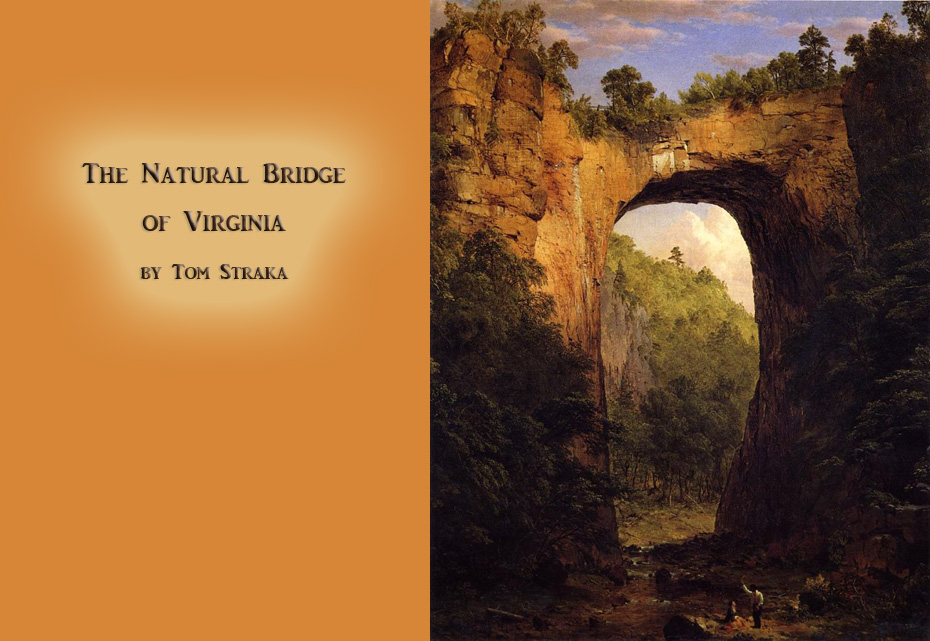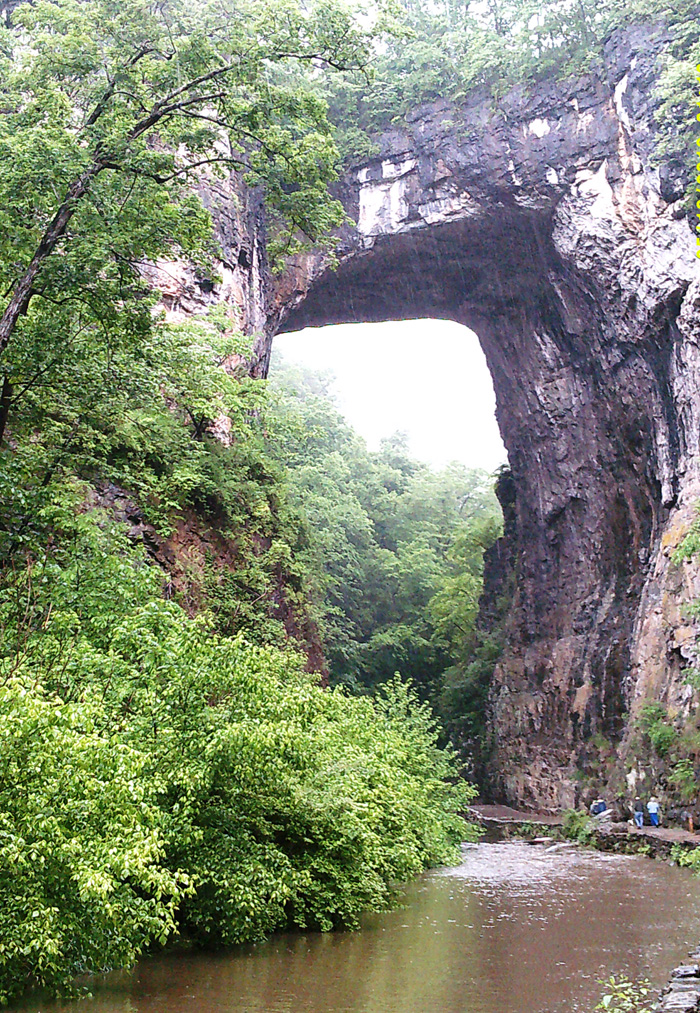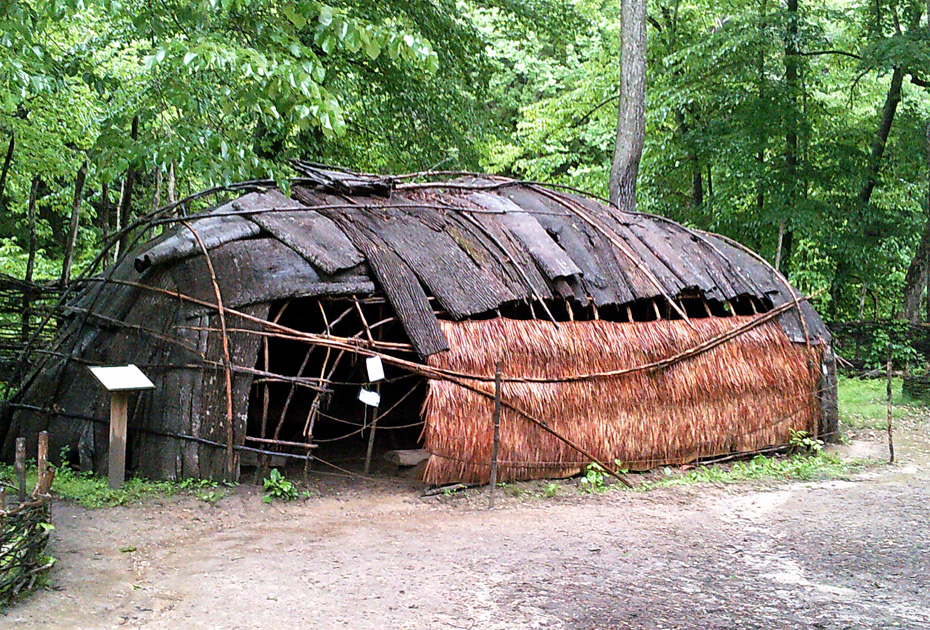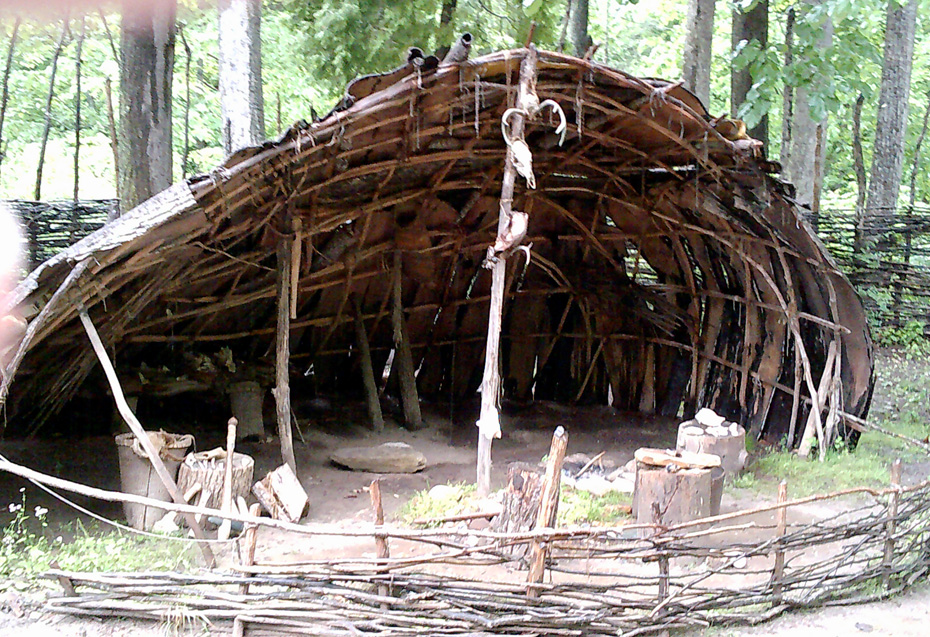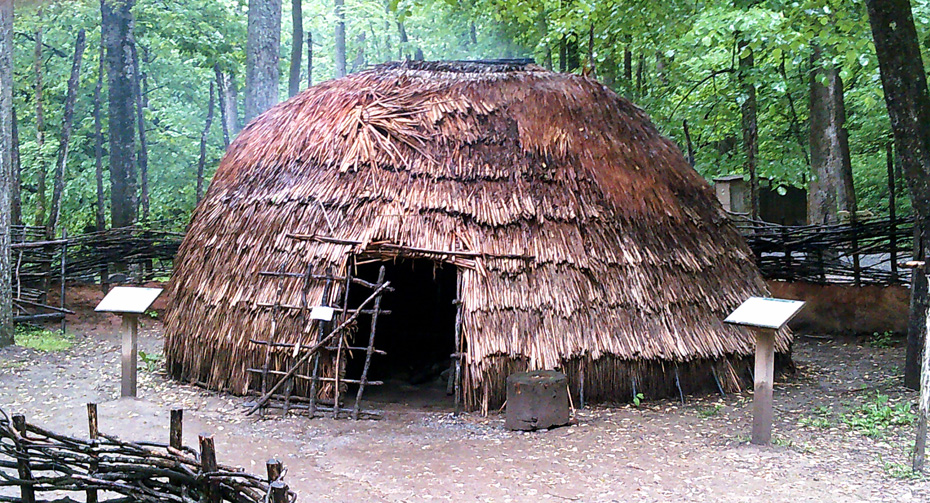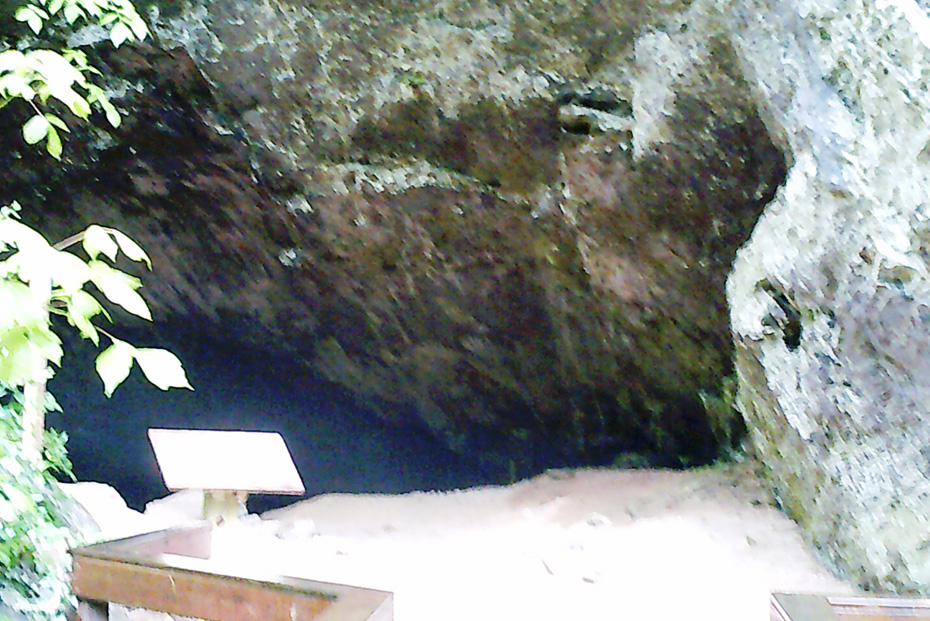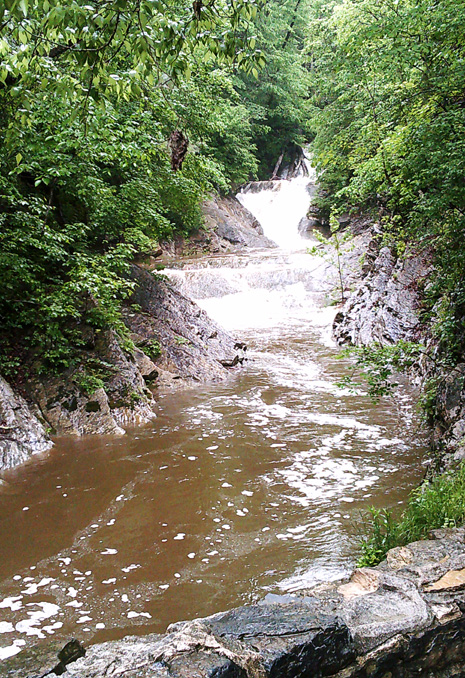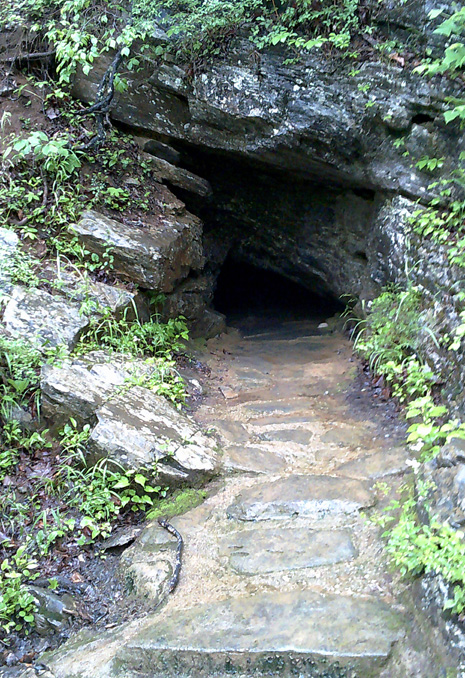
|
|
|
|
One of the best attractions along Interstate 81 is the Natural Bridge of Virginia. Early in the nation’s history, Hudson River School artists painted the landscapes of America’s most iconic natural scenes. These are the large landscapes that hang in the U.S. and state capitols. The Natural Bridge, Virginia, painted by Frederic Edwin Church, is one of them. That landscape is little-changed from 1852 when he painted it. In early America the two greatest natural wonders were Niagara Falls and the Natural Bridge. This was before the Grand Canyon and Yellowstone; today the Natural Bridge is a regional attraction, but one worthy of a side trip off the interstate (a side trip of only a couple of miles). Early History Prior to the arrival of European settlers, what would become Rockbridge County, Virginia was the domain of the Native American Monacan tribe. The Monacans were attacked by enemy tribes and fled into the thick forest. While being pursued, they were blocked and trapped by a deep canyon. They pleaded with the Great Spirit to provide a means of escape from their enemy. Soon they noticed a thick rock bridge now crossed the canyon, allowing a safe passage for the tribe. Gaining confidence from seeing their apparent favor of the Great Spirit, the Monacans stood against their enemy at the rock bridge and repelled a much greater force. The Great Spirit had saved the tribe and the span across the canyon became the “Bridge of God.” The bridge is still sacred to the Monacans. Cedar Creek, the force that created the bridge, is a tributary of the James River. It was originally a limestone cave and the most of the cave roof collapsed, leaving a small portion that became the bridge. Since the first permanent English colony in the New World was at Jamestown in 1607, it is likely that early explorers came up the James River and “discovered” it in the early eighteenth century. Of course, Native Americans actually discovered it well before that. Another legend, besides the Monacan one, and not supported by the historical record, is that a young George Washington visited the bridge as a surveyor about 1750. Guides used to point to the initials “G. W.” on the wall of the bridge and tell a story about Washington throwing a stone from Cedar Creek across the bridge. A Daughters of the American Revolution tablet even commemorates “the fact that the Natural Bridge patent was surveyed by George Washington about 1750 A.D.” While the Natural Bridge was in private ownership, these legends helped attract tourists. Thomas Jefferson is also associated with the Natural Bridge; he was its first private owner in 1774. His grant, from King George III, did “give, Grant and confirm unto Thomas Jefferson, one certain Tract or parcel of land, containing 157 acres, lying in the County of Botetourt, including the Natural Bridge on Cedar Creek, a branch of the James River.” He called it “the most sublime of Nature’s works” and he visited it often. It remained in private ownership after Jefferson and in 2016 became a state park. The Natural Bridge was so well-known in early America that Herman Melville referred to it in his 1851 novel, Moby Dick. In describing the whale, he wrote: “But soon the fore part of him slowly rose from the water; for an instant his whole marbleized body formed a high arch, like Virginia’s Natural Bridge . . .” Melville assumed the natural wonder was familiar to his readers, illustrating its renown at the time.
Today A sign at the entrance gives the details of the bridge: “The arch is composed of solid grey limestone. It is 215 feet high (55 feet higher than Niagara Falls), 40 feet thick, 100 feet wide and spans 90 feet between the massive walls. The span contains 450,000 cubic feet of rock. If man had scales to weight it, the rocks would balance about 72,000,000 pounds or 36,000 tons. The rocks that compose the bridge are early Ordovician, about 500 million years old. The internal forms of these rocks, that fold and break in the layers, were imposed on them during the Appalachian Mountain building process toward the end of the Paleozoic Era, more than 200 million years ago. At its highest point, the bridge is approximately1160 feet above sea level. . . . The Lee Highway, U.S. Route 11, crosses over the Natural Bridge, even today.”
The Natural Bridge is on the Cedar Creek Self-Guided Trail that starts at the Cedar Creek Cafe and ends at a waterfall 0.9 miles away. It’s an “out-and-back trail,” once you reach the end you must return the same way, making the total distance 1.8 miles. The trail follows Cedar Creek, is relatively flat, and an easy walk. All along the trail you’ll find arborvitae, or northern white cedar. One of the first stops is the remains of a particularly old arborvitae with an interesting history (that probably qualifies as another legend). The story is: “Before dying in 1980, this more than 1600 year old specimen of the arbor vitae tree was the oldest and largest known in the world. Its diameter measures 56 inches. Depending on climatic conditions that determine its growth rate, the arbor vitae increases in diameter about one inch every thirty years. Native Americans use the foliage as a source of Vitamin C to prevent scurvy.” The Natural Bridge is at the beginning of the trail and you first glimpse it as you round a corner. It lives up to its images; the artists did not have to exaggerate. It requires a while to take in, with three primary viewing sites: front, under, and back. It’s impressive from all three; different angles paint vastly different views. That it ranked with Niagara Falls isn’t surprising.
Down the trail is a re-creation of a Monacan town, a living history exhibit. Interpreters dressed in period clothing demonstrate various activities that change with the seasons. The activities include shelter construction, hide tanning, mat and rope weaving, tool-making, gardening, harvesting, preparing meals, and making pots, bowls, and baskets. The re-creation was done in partnership with the Monacan tribe and the structures, and even the spacing between them, are authentic to the original.
Thomas Jefferson found a practical way to make some revenue off of the Natural Bridge property. Cedar Creek created a small cave along the trail that contained saltpeter (from bird and bat droppings). The soil in the cave provided saltpeter for making gunpowder during the War of 1812 and the American Civil War. Today the cave is open to tourists only during the summer months, as hibernating bats would be disturbed during the winter months.
Another stop is the Lost River, an underground stream that begins at another stream entering a sinkhole about 0.4 miles away. Its destination has yet to be determined. It was discovered in 1812 by saltpeter miners who heard the water flowing behind the rocks. They ran water from the steam to their mine for use in boiling down saltpeter. The trail ends at Lace Falls, the best location to see the many limestone layers and the various flora and fauna. The falls is a thirty-foot whitewater cascade.
Since the history of the natural
wonder includes it being a tourist destination, many
other tourist-oriented attractions are close by, some
not that natural. They include Natural Bridge Caverns,
Virginia Safari Park, Dinosaur Kingdom II, and Natural
Bridge Zoo. The main attraction remains the one that
attracted Thomas Jefferson. Author: Thomas J. Straka is a forestry professor at Clemson University in South Carolina. He has a keen interest in history. For additional information: Natural Bridge State Park:
http://www.dcr.virginia.gov/state-parks/natural-bridge#general_information Natural Bridge:
https://www.virginia.org/cities/NaturalBridge
Natural Bridge of Virginia by Robert J. Smith:
https://cei.org/studies-issue-analysis/natural-bridge-virginia
Natural Bridge – Virginia Places: http://www.virginiaplaces.org/geology/naturalbridge.html
We'd love your comments!
|
Connect with us on:
American Roads and | |||||||||||||
|
Public Disclosure--
Please Read The FTC has a law requiring web sites to let their readers know if any of the stories are "sponsored" or compensated. We also are to let readers know if any of our links are ads. Most are not. They are just a way to direct you to more information about the article where the link is placed. We also have several ads on our pages. They are clearly marked as ads. I think readers are smart enough to know an ad when they see one but to obey the letter of the law, I am putting this statement here to make sure everyone understands. American Roads and Global Highways may contain affiliate links or ads. Further, as their bios show, most of the feature writers are professional travel writers. As such we are frequently invited on press trips, also called fam trips. On these trips most of our lodging, dining, admissions fees and often plane fare are covered by the city or firm hosting the trip. It is an opportunity to visit places we might not otherwise be able to visit. However, no one tells us what to write about those places. All opinions are 100% those of the author of that feature column. |
||||||||||||||
|
Privacy Policy/ Archives /
Contributors /
Subscribe to
American Roads Books by
Kathleen Walls /
Contact /
Sponsor or Advertise/ American Roads & Global Highways Home Page
|
